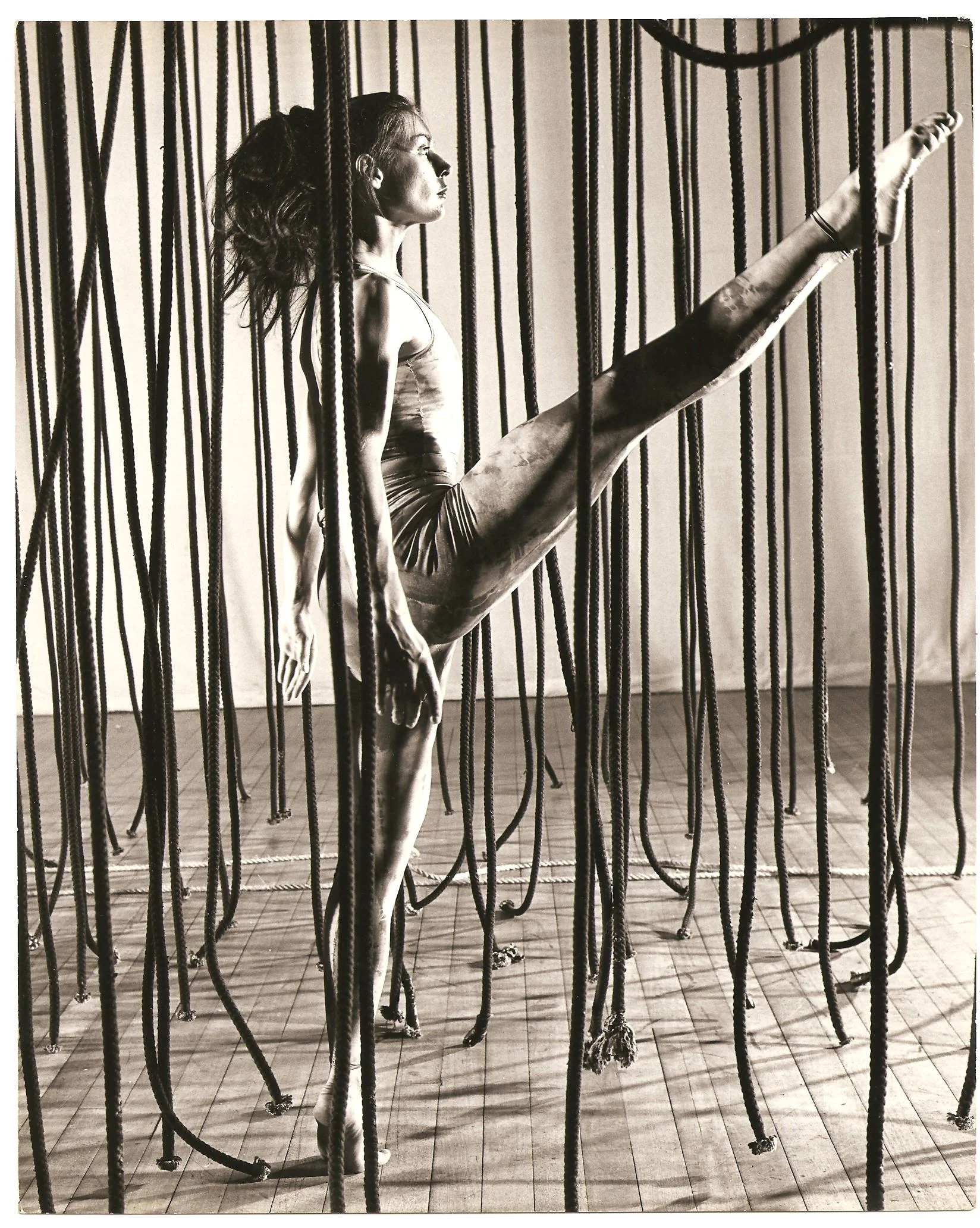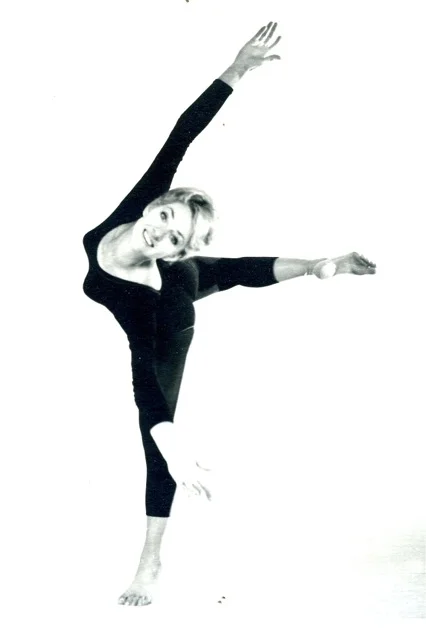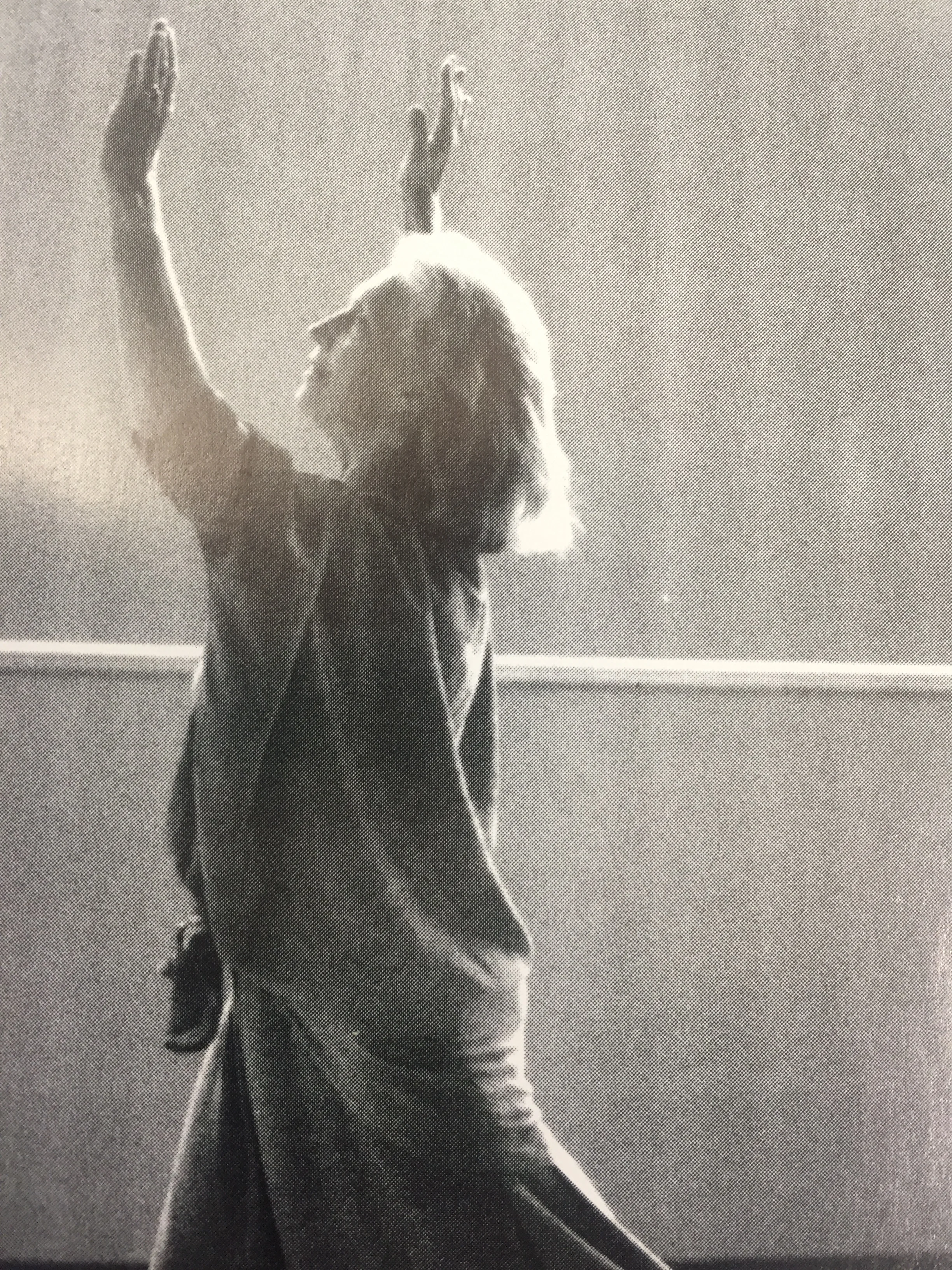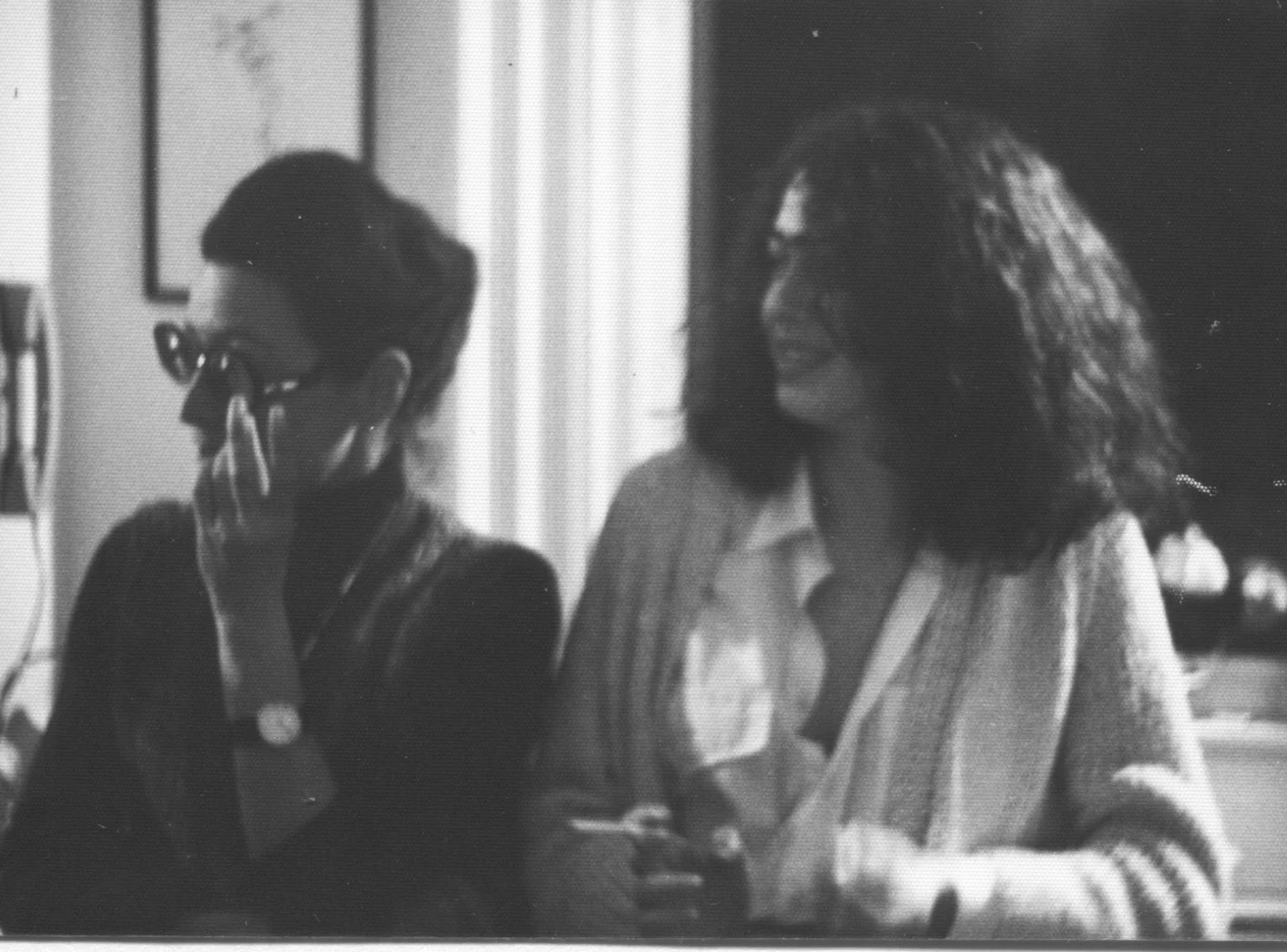Text by Sonia York-Pryce
This article is based on information I gathered during my doctoral research, which focused on professional dancers aged over 40 who are still performing.1 I cite from interviews I have undertaken with dancers based nationally and internationally who initially responded to a survey I sent them regarding ageism and endurance in performance. My aim is to bring attention to their situation, and to give recognition to their craft and longevity. My research has shown that some—but not all—feel side-lined, with few opportunities given to perform; hence, they feel invisible. This marginalisation has caused discord among the cohort, leading them to feel that dance programmers do not know how or want to schedule them, thus depriving audiences of this unrepresented demographic.
The dance by-date2 clung to throughout much of Western dance necessitates change from within, a need to widen the boundaries in place, and to recognise the lived experience these dancers embody. After all, they are a “phenomenological breathing Curriculum Vitae”, “a dance archive”3. Giving mature dancers more performance opportunities allows for more diversification in the dance industry as well as a better representation of an older demographic in society. While the USA has a long tradition of honouring and keeping visible its senior dance artists, in Europe and most of Australia the appreciation and visibility of older professional dancers is still slow to be realised.
A pioneer in offering a platform for older dancers, Jiří Kylián created the Nederlands Dans Theater 3 (NDT3) in 1991 for dancers over the age of 40.4 He observed the paradox that just as a dancer “was growing up,” it was deemed time for them to retire.5 He recognised their embodied dance history.6 As founding member of NDT 3 Gérard Lemaitre stated, “Kylián saved our lives.”7 However, NDT 3’s Sabine Kupferberg felt negativity from within the dance sector before they had even performed. In an interview with me, she maintained, “I think the audience was not believing it would happen we were all over 40, ... they saw a full physical performance of mature dancers, with no compromise and since that day we worked 15 years on that level.”8
Gérard Lemaitre, Sabine Kupferberg, "the old man and me" ©Gert Weigelt.
Inspired by the legacy of NDT 3, Dance On Ensemble Berlin (DOE)9 is an initiative formed in 2014 by Diehl & Ritter, who also recognised the continuing waste of older dancers’ talent, deciding to change the traditional face of dance by valuing ageing, craft, and lived experience.10 DOE’s audience welcome older dancers and the wealth of experience exhibited through their performance. Artistic director of Dance On, Ty Boomershine conveyed that being in his late 40s, he wants to achieve more and prove to himself that he is stronger than when was in his 20s. Boomershine stated, “I do feel the need to be – to have it – I still want to be seen as good.”11 He encountered ageism when auditioning pre-DOE, discovering that sharing the space with younger students posed a dilemma for them; they couldn’t understand how this older dancer could be wanting the same job.
Canada’s independent dance artist Louise Lecavalier has a strong following globally.12 She is conscious “that the dance I create is for everyone, not just older people, … I do not feel old, and do not feel so mature either.”13 Nevertheless, she is mindful of being at a time of life that is physically challenging for her audience to observe and for her to experience.
Louise Lecavalier "Mille Batailles" © Marlene Millar.
Sweden’s Charlotta Öfverholm, known for her extreme physical performances, pushes herself regardless.14 She senses that “as a performer, I am better as an artist on stage now than before.”15 Though she has noted some recent negativity in the press regarding her ageing, this is counterbalanced by comments such as “despite her age, when she dances, she is forever young.”16 Öfverholm is a firm advocate for older dancers, having created the annual Age on Stage festivals, which have provoked a much-needed dialogue in Europe regarding ageism.17
Charlotta Öfverholm, ©Vojech Brtnicky.
In Australia, Liz Cornish’s Momentum Dance, a hybrid company based in Perth, states how hard it is to make money from performing, because of the lack of funding and support, which limits the company’s ability to travel interstate.18 Cornish feels it is also challenging to find choreographers prepared to work with older dancers, recognising their untapped potential.19 Sydney’s Australian Dance Artists (ADA) features four exemplary dancers who have collaborated with artist Ken Unsworth for over 20 years, performing site-specific works for invited audiences, including young dancers who are inspired by what they see.20 ADA dancer Patrick Harding-Irmer is mindful that “generally the mature dancer is not highly respected.”21 Michele Ryan, artistic director of Restless Dance, acknowledges that audiences do appreciate the artistry of an older dancer much more in Europe as opposed to Australia, but feels a change is in the making.22
Mature Moves (2016), hosted by Senior Producer Annette Downs of Tasmania Performs emphasised the importance of acknowledging Australia’s senior dance artists, opening a debate “ challenging the conventions of ageing through dance”.23 This was a great opportunity for audiences to view dance artists Wendy Morrow, Julie-Anne Long, Neil Cameron and Glen Murray revisits old works. Murray’s re-working of ‘Brittle’ proved a very positive and enlightening experience for him, he states, ‘what I am kind of enjoying about ageing is that what is happening to me now could only be happening because of my age.24
Glen Murray, Brittle, 2016 ©Nicole Robson.
International Guest Artist Liz Aggiss revved up audiences into a party frenzy of joy with her hugely successful run of her solo show, “Slap & Tickle”. Aggiss is very aware of the relationship between herself and the viewer, taking nothing for granted. She states, “I know that the audience needs time to understand that this body is a different kind of body, and this is a solo female body who is inhabiting work in a very different way.’25
The high priestess of Australian dance, Elizabeth Cameron-Dalman, now in her mid 80s, signifies the positives of ageing having spent the last four years touring all over the world with Irish dance theatre company Teac Damsa’s re-imagining of Swan Lake. Dalman embodies the riches shown through ageing that embellish the lived experience of the dance, dismissing the negatives. She states, “ I have always wanted ... to break, to push that boundary further”.26 The centurion dancer Eileen Kramer garners interest globally as the poster girl for the positives that dancing can have for the ageing body, depicting that dance and creativity need not cease as the years advance.
Elizabeth Cameron Dalman, ©Sonia York-Pryce 2019.
Liz Lea, Annalouise Paul, Vicki Van Hout, Brian Lucas and Glen Murray continue in their quest to maintain performing. Liz Lea has been instrumental in providing tremendous support for mature dance artists with hosting the Bold Festivals (2017/19) which celebrate “the legacy and impact of professional and community dance”.27 Audiences were treated to performances in the National Portrait Gallery of Elizabeth Cameron Dalman, Anca Frankenhaeuser, and Liz Lea who demonstrated that the intertwining assets of longevity and artistry are rich and undervalued. Vicki Van Hout’s rousing performance of ‘Plenty Serious TALK TALK’, exhibited the power of an artist still perfecting her craft at 50, despite some being amazed that she is still performing.28 Her mantra to keep ‘being fearless’ certainly does not inhibit but embellishes her performativity. These artists were the highlight of the 2019 festival.
Despite these positive moves there is still room for a change in attitudes. Addressing visibility is key to maintaining and valuing this under-represented demographic, by doing so, audiences would benefit from seeing performances that feature older professional dancers. As noted by DOE, we need “the presence and richness” that maturity brings, and by widening the boundaries in dance, they will embellish our stages.29
1 Sonia York-Pryce, “Ageism and the Mature Dancer: An Investigation into Ageism and Longevity in Today’s
Ballet and Contemporary Dance Culture,” Doctor of Visual Arts, Queensland College of Art, Griffith University,
2019.
2 Mark Edward and Helen Newell, "Dying Swans and Dragged up Dames: A Photographic Exploration of the
Ageing Dancer," Animated , 2013, www.communitydance.org.uk/animated.
3 Mark Edward and Helen Newell, "Temporality of the Dancing Body: Tears, Fears and Ageing Dears," paper
presented at Making Sense of Pain conference, Warsaw, Poland, 2011.
4 NDT 3 ran from 1991 to 2006.
5 Roslyn Sulcas, "Bodies of Knowledge." Dance Magazine Inc , 9 May 1998, 59.
6 Ibid.
7 Interview with the author, January 2015, at the Korzo Theatre, The Hague, Holland.
8 Ibid.
9 See Dance On Ensemble, https://dance-on.net/en/ensemble/
10 See https://dance-on.net/en/mission/
11 Interview with the author, April 2017, Berlin.
12 Louise Lecavalier, https://louiselecavalier.com/
13 Email to the author, September 2013.
14 Charlotta Öfverholm Company Jus de la Vie https://jusdelavie.se/
15 Interview with the author, October 2015, Stockholm.
16 Ibid.
17 Age on Stage https://jusdelavie.se/age-on-stage-the-project/
See also http://www.critical-stages.org/20/age-on-stage/
18 Skype interview with the author, September 2018.
19 Ibid.
20 http://australiandanceartists.com/
21 Email to the author, August 2014.
22 Email to the author, June 2017.
23 https://www.tasperforms.com/2016-2/mature-moves
24 Interview with the author, September 2016, Hobart.
25 Interview with the author, May 2016, Brighton.
26 Interview with the author, August 2017, Sydney.
27 https://lizleadance.com/bold/
28 Interview with the author, March 2019, Canberra.
29 https://dance-on.net/en/mission/
Delving into Dance has published interviews with two artist mentioned in this article Elizabeth Cameron Dalman and Vicki Van Hout.
Sonia York-Pryce is a Visual Arts doctoral candidate at Queensland College of Art, Griffith
University. Her research ‘Ageism and the Mature Dancer, An Investigation into Ageism and
Longevity in Today’s Ballet and Contemporary Dance Culture,’ has concentrated on
gathering oral stories from older professional dancers still performing in Australia and
internationally. Her dance films featuring older professional dancers,
Interprète/Inappropriate Behaviour and utterly (in)appropriate have been screened in
Australia and internationally.









